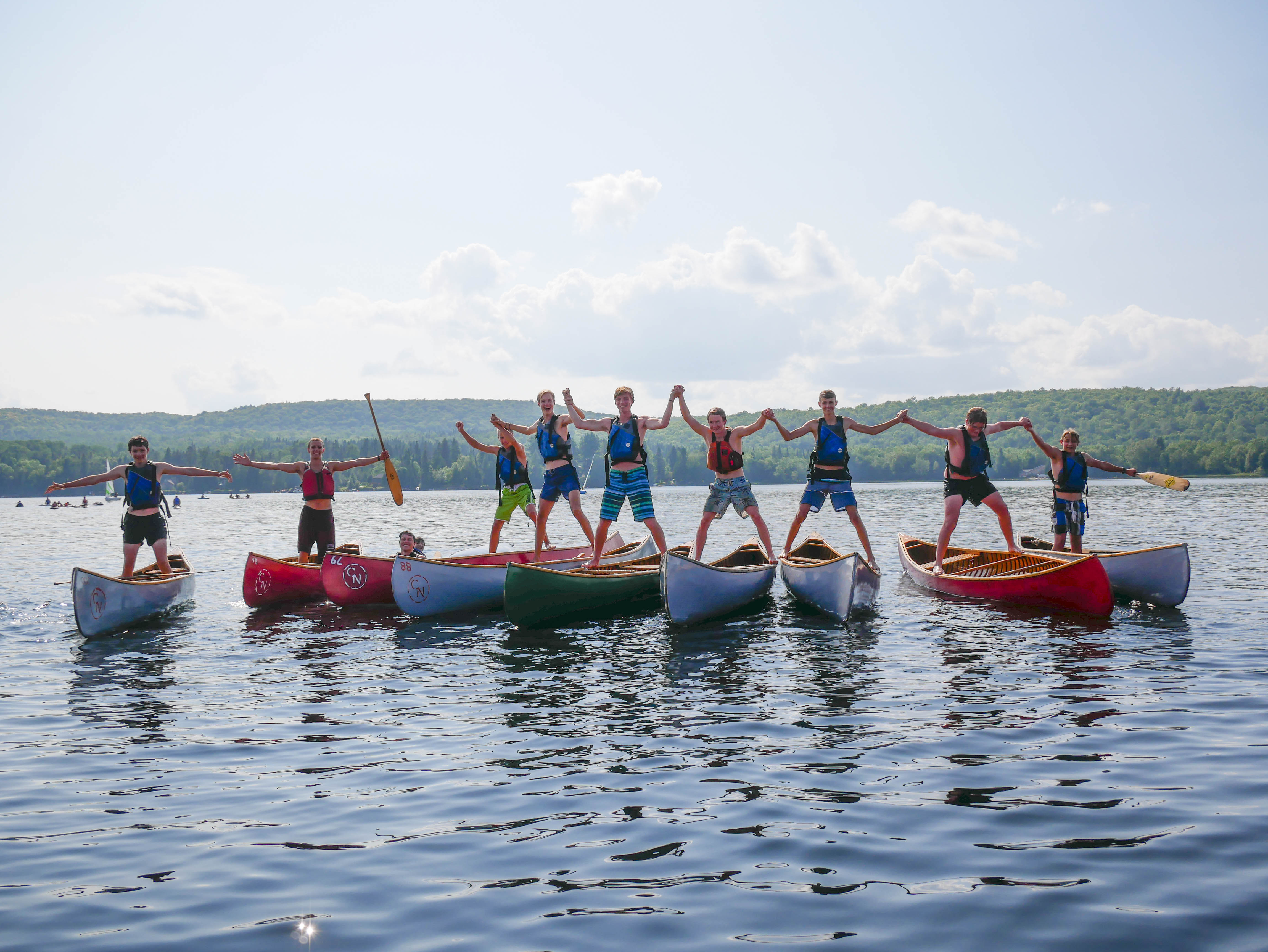The Nature of Things
Time spent at camp reduces stress, increases wellness, and boosts mental clarity. All good stuff. Do kids care? Not in the least. For them, it’s all about one thing: play.
Time spent at camp reduces stress, increases wellness, and boosts mental clarity. All good stuff. Do kids care? Not in the least. For them, it’s all about one thing: play.
By Glen Herbert
Despite all the mental and medical benefits, for kids the natural world—whether it’s the backyard, the park down the street, or the darkest rainforest—is a playground. It’s about having fun. Nature provides a source of wonder and the opportunity to experience something on their own terms, free from prescribed narratives, actively stretching their imaginations and interests. “Most of the time, kids don’t need to be shown how to connect with nature,” says Scott Sampson. “It’s ingrained in their DNA.” Kids are itching to get out there, to get into the thick of it, to revel in the dirt and the sand and the pollywogs. Sampson believes that the best thing we could ever do is to let them.

Camp Nominingue, Nominingue, Quebec
Playing
“Young kids long to play, it’s what they’re designed to do.” You’ve likely seen Scott Sampson before—he’s the tall, loping paleontologist that bookends each episode of the PBS show “Dinosaur Train.” He’s also the author of the recent book How to Raise a Wild Child: The Art and Science of Falling in Love with Nature.
Whenever he talks about getting children active and into nature, Sampson is quick to note that it’s not just about the body, it’s also about the mind. The kind of play that he says kids are designed for—and he believes, long for—includes imaginative games built around the most basic of elements: sticks and stones rather than light sabers and action figures. “Smaller items”—the kinds of things nature provides in abundance—“can be used in an almost infinite array of activities. A rapidly growing mountain of evidence indicates that this kind of nature play is critical for their physical, mental, emotional, and social development, as well as their everyday health.” Again, kids don’t really care about any of that. But adults, says Sampson, should.
Connecting with Nature
The problem is that we—parents, teachers—tend to unwittingly get in the way. Kids want to get dirty; we want to keep them clean. “Too often these days, children’s encounters with nature are dominated by a look-but-don’t-touch directive,” Sampson explains. Adults distance their kids from the natural world, despite their ingrained affinity for it.
“Nature connection depends on first-hand, multi-sensory encounters,” say Sampson. It’s important, he says, to see it as less of a laboratory for higher learning than a “messy, dirty business” where kids can involve themselves in “picking leaves and flowers, turning over rocks, holding wriggling worms, splashing in ponds.”
Rather than limits, he says, children benefit most from experiencing its opposite: possibility. When kids see mentors and peers kayaking, hiking, catching frogs, it all seems cooler, more available, than it ever has before. And the more they perceive the value of active outdoor activity, “the more kids will tend to adopt the same value.” The real key is just getting them outside. “Nature connection is a contact sport,” says Sampson, “and nature can take it.”

Taking the Lead
More often than not, kids are ready to get out there, on their own, long before we’re ready to set them loose. “I find children are much more ready to go to camp than their parents are to let them go,” says Patti Thom, director of Camp Tanamakoon in Algonquin Park.
Dave Graham, past director of Camp Kandalore agrees. “Kids are traditionally ready for day camp or residential camp when they start to get involved in activities outside the home—playing hockey or baseball or starting to generate interest away from the family.”
It’s in our DNA as parents to be protective, just as it’s in our kids’ DNA to sneak past the caution tape. In recognition of this dynamic, Sampson coined the term “hummingbird parenting” as an antidote to helicopter parenting. Hummingbird parents, unlike the helicopter kind, keep a bit of distance, “staying on the periphery, sipping nectar ... and zooming in only when necessary.” It’s a process, of course, just as growing up is, though it recognizes that children’s needs are changing much more quickly than our own. They’re ramping up, just like they’re supposed to do. And that’s OK.
•
Urban camps that encourage kids and teens to explore their love of the natural world include nature summer camps and zoo camps.